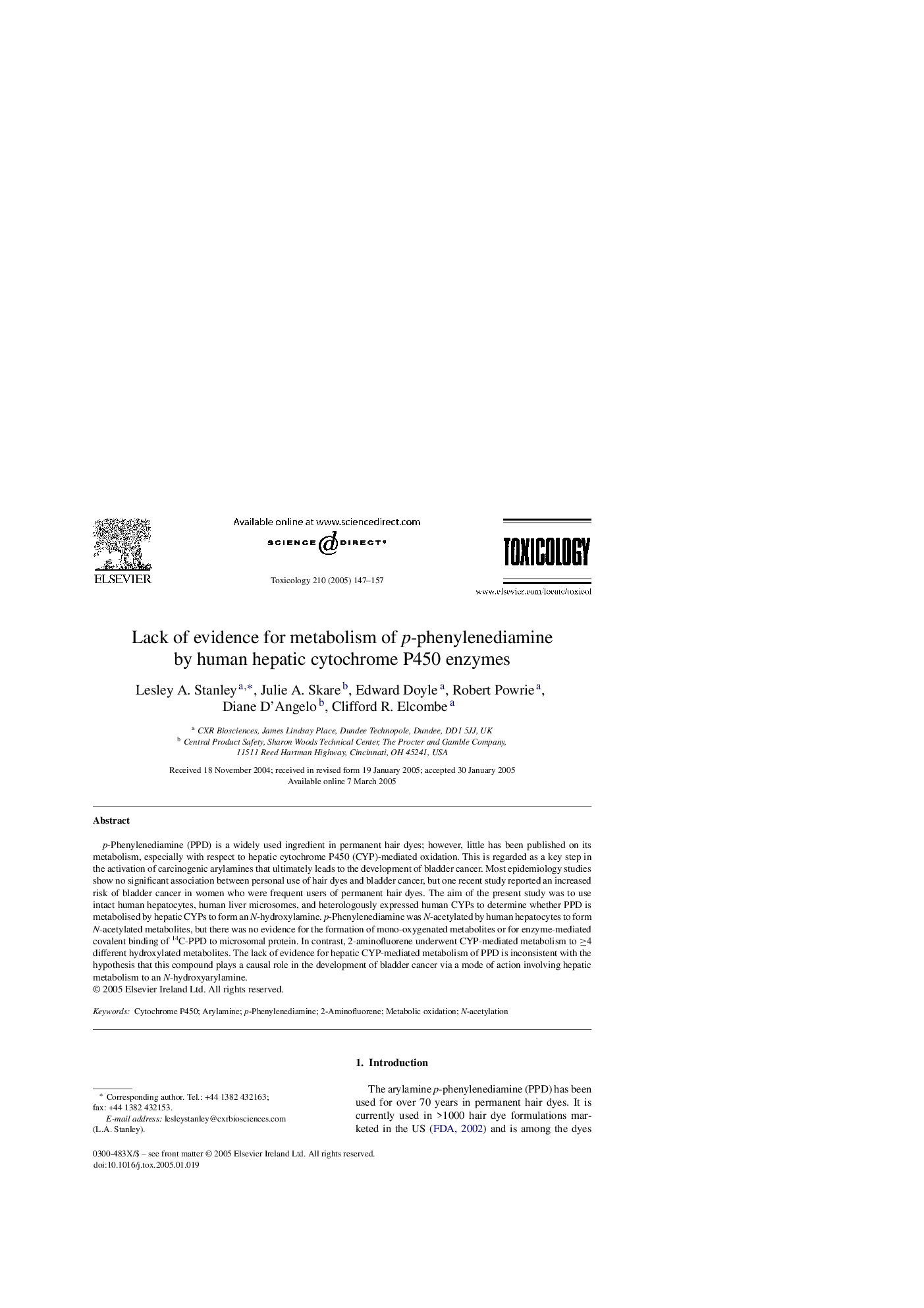| Article ID | Journal | Published Year | Pages | File Type |
|---|---|---|---|---|
| 9034977 | Toxicology | 2005 | 11 Pages |
Abstract
p-Phenylenediamine (PPD) is a widely used ingredient in permanent hair dyes; however, little has been published on its metabolism, especially with respect to hepatic cytochrome P450 (CYP)-mediated oxidation. This is regarded as a key step in the activation of carcinogenic arylamines that ultimately leads to the development of bladder cancer. Most epidemiology studies show no significant association between personal use of hair dyes and bladder cancer, but one recent study reported an increased risk of bladder cancer in women who were frequent users of permanent hair dyes. The aim of the present study was to use intact human hepatocytes, human liver microsomes, and heterologously expressed human CYPs to determine whether PPD is metabolised by hepatic CYPs to form an N-hydroxylamine. p-Phenylenediamine was N-acetylated by human hepatocytes to form N-acetylated metabolites, but there was no evidence for the formation of mono-oxygenated metabolites or for enzyme-mediated covalent binding of 14C-PPD to microsomal protein. In contrast, 2-aminofluorene underwent CYP-mediated metabolism to â¥4 different hydroxylated metabolites. The lack of evidence for hepatic CYP-mediated metabolism of PPD is inconsistent with the hypothesis that this compound plays a causal role in the development of bladder cancer via a mode of action involving hepatic metabolism to an N-hydroxyarylamine.
Related Topics
Life Sciences
Environmental Science
Health, Toxicology and Mutagenesis
Authors
Lesley A. Stanley, Julie A. Skare, Edward Doyle, Robert Powrie, Diane D'Angelo, Clifford R. Elcombe,
